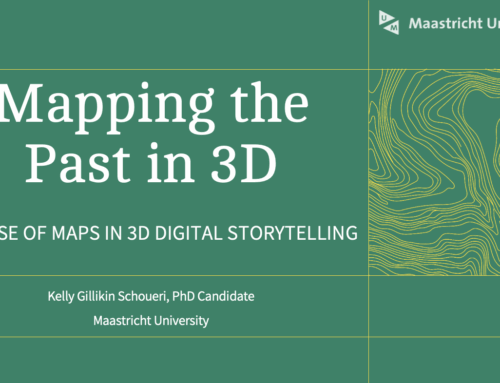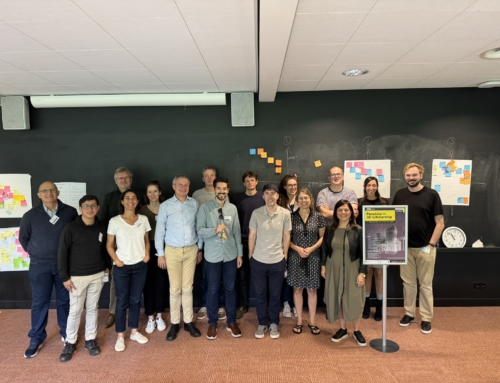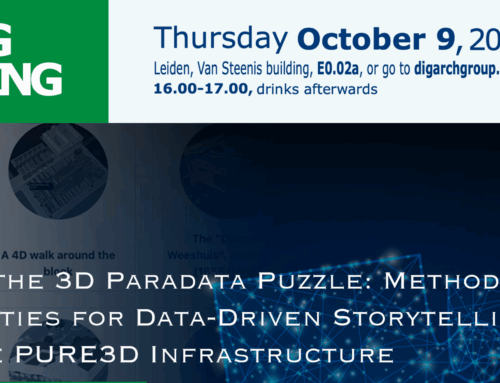Call for New 3D Digital Scholarly Editions
What: A call for new projects for PURE3D
When: Call opens 31 January 2024 and closes 15 March 2024 EXTENDED – 22 MARCH 2024
Where: For selected projects – virtual workshops, tutorials, face to face meetings, mentoring sessions, and assistance from the PURE3D team
How: See further details below

Background
PURE3D: The Infrastructure for the Publication and Preservation of 3D Scholarship, funded by Platform Digitale Infrastructuur – Social Sciences & Humanities is delighted to announce a call for new 3D scholarly editions to be developed in its beta infrastructure. These editions adopt as their premise that the 3D model is a valuable source for taking a user-centric approach for the communication of research findings, (alternative) hypotheses, and (historical) contexts. 3D models are thus the “text” which can be enriched via multimodal annotation.
The PURE3D environment provides a user-friendly and persistent environment for individuals or teams to create their editions using Smithsonian Voyager, an interface for creating editions and narratives with a 3D model at its centre. We welcome projects from any field in which 3D can be used as a modality for argumentation, simulation, knowledge communication, and hypothesis testing, including but not limited to heritage, archaeology, history, museology, architecture, anthropology, forensics, and engineering.
What we offer: Successful projects will receive guidance and support from the PURE3D team in the form of virtual workshops, tutorials, and fully-paid face to face meetings. Projects will also benefit from individual mentorship by PURE3D staff, technical and conceptual support, data preservation, and peer-review of their 3D scholarly edition. As part of the OPER3D project (funded by NWO), project participants will also contribute to the development of a peer review workflow and practice, ultimately aiming at the publication of a peer-reviewed 3D scholarly edition.
Examples of existing projects within the infrastructure include:
Contested Memories: The Battle of Mount Street Bridge
Let there Be Light: Nederlands Mining Museum
Rembrandt’s Birthplace: Heritage Leiden
Maastricht 1748: The Square of Our Lady and it's claustral belt
Modern Art in 3D: Museum Van Bommel van Dam
Amsterdam's Vlooienburg Neighbourhood
Who is it for: This call is to source new projects which will be carried out between April 2024 and mid-October 2024. Teams can be located anywhere in the world as support can be carried out virtually. The main requirement for application is that you have access to an existing 3D model or models to work with (you could propose a number of editions on a particular topic or theme), and have (or can source) text, images, videos, other 3D models, etc., that you would use to contextualise it/them. The narrative or annotation that contextualises the model should make good use of the 3D space. We welcome submissions of 3D models created by you, or one of the many 3D models that can be found online with open licenses.
Requirements
One or more 3D models that have been completed (or nearly completed) by the time this call closes. 3D models can be in the form of digitised objects, structures, landscapes etc. or reconstructed environments in computer graphics. Models can be project-specific or created by a heritage institution, be free from copyright (or copyright is explicitly obtained) and meet the technical requirements below:
- .gltf/.glb format (Draco Compression is advised for .glb files)
- Including PBR extensions that conform to the three.js standard: metalness/roughness as its PBR shading model (Please note that Specular/Glossiness not supported by three.js)
- For single digitised objects, one 4K texture map (in .jpg with 86 compression). For complex scenes, the textures of the various parts should conform to the 1024×1024 texture standard.
- Model size maximum: 230,000 triangles for all geometry in the scene. This ensures good performance but can be higher if it is a complex object/scene.
- Essential model information: geometry, texture and normals. Please note that other 3D model elements, e.g., lights, cameras, color vertex information are not needed/cannot be supported.
Testimonials by current project partners
“The PURE3D project is a highly intriguing initiative that positions 3D models in the context of cultural heritage as a tool for visualising the past and as a scientific publication in its own right. Participation in the project allowed me to develop storytelling skills, including selecting an audience for my edition and adapting the content to an easy-to-understand structure provided by Smithsonian Voyager. At the same time, I learn the requirements for publishing 3D models in a web-based viewer and how to adapt a 3D model to meet them. Although preparing my edition is demanding, the support of the entire project team allows me to go through the process enjoyably.” – Igor Piotr Bajena, PhD Candidate Universita di Bologna.
“Participating in the project was a great way to view and research our collection in a different way. It provides new and interesting information about an object and makes it more understandable and accessible to a wider audience. It’s a way to preserve and show heritage and it’s fun to find out more about museum objects. It makes you look at heritage in a different way and hopefully it will ensure that more people are able to come in contact with heritage.”- Hilde Janssen, Collections Manager, Museum van Bommel van Dam.
“Digital transformations shape new forms of storytelling and publication. PURE3D embraces the potential of 3D technologies and infrastructures to tell multidimensional and multimodal narratives about the past. Highly recommended for scholars who would like to explore new ways of reconstructing, presenting and enriching historical objects and environments through digital scholarly editions.”- Tim van der Heijden, Assistant Professor Media Studies, Open University of the Netherlands.





